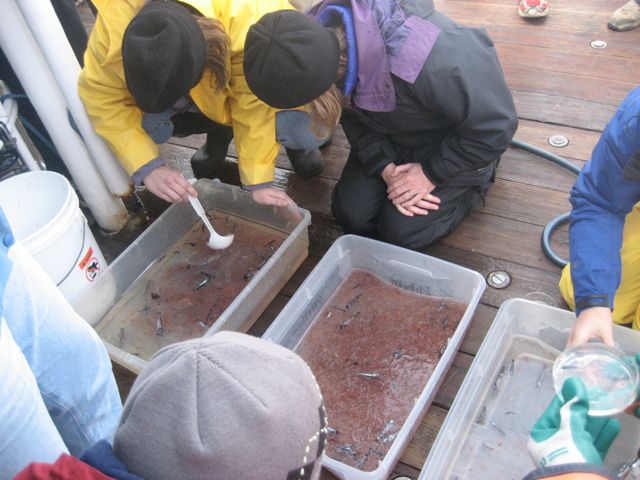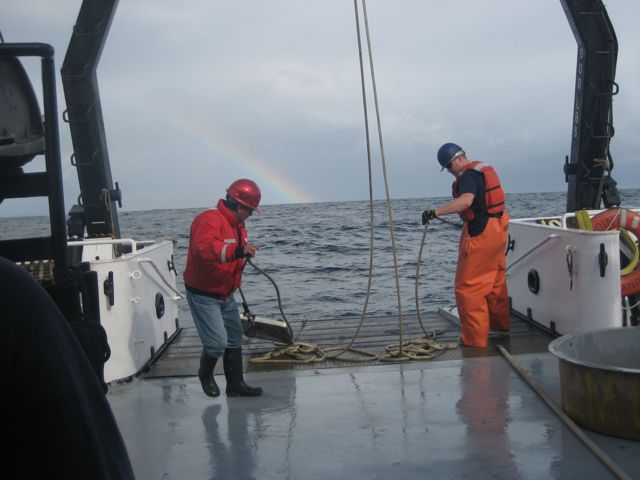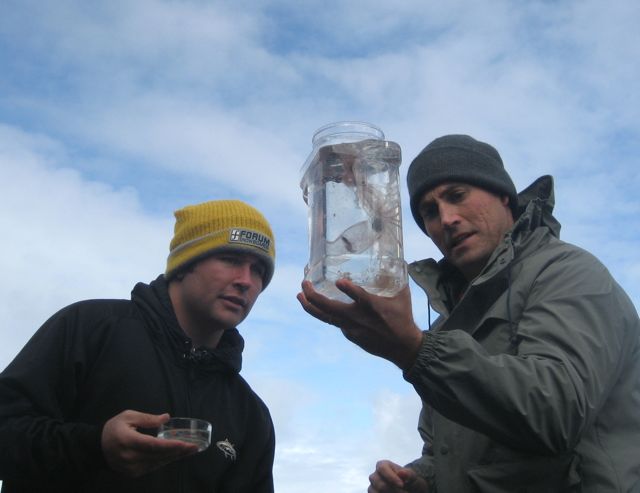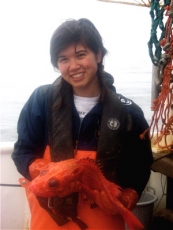
by Erin Loury, Ichthyology Lab
The swell was up and the rain in and out on Tuesday, but our ichthyology class braved it all for our class cruise in Monterey Bay. The Point Sur, MLML’s largest research vessel, was loaded with our class, an invertebrate zoology class from San Jose State, and various scientists from the Monterey Bay Aquarium and the Monterey Bay Aquarium Research Institute (incluing Kyra Schlining, featured in our alumni profiles!). We were all on a treasure hunt of sorts – ready to dip our big nets in the water and see what kind of fish and invertebrates would come up. It was anyone’s guess.

Like most cruises, there was a lot of downtime – waiting to get to our trawl location, waiting for the net to go out (about half an hour to reach our desired depth of 900 m!), waiting while the net dragged along catching things, waiting for it to come back in… But just trying to hold on to your balance (and your lunch) can be keep you plenty occupied on a rolling boat. It was a rough day for the faint of stomach, which I’m sure left many pondering Amanda’s timeless question: “Can I still become a marine biologist even if I get seasick?” The short answer is yes – but it’s certainly not always fun. Or pretty, for that matter.

Our first trawl came up empty, because the net didn’t make it to the sea floor where it was designed to sample. But our second trawl of the midwater brought up a whole slurry of things to pick through and distract us from our queasiness. We huddled around tubs sloshing with a bright red soup of krill, the choice food of many whales, birds and fish. These little critters like small shrimp and are called euhpausiids. Lots of other interesting things were floating in the mix – the visiting scientists scooped up some squid, little jellyfish, and other gelatinous blobs. The fish class picked out the various myctophids, or lanternfish, which are little, black, deepwater fish that have a line of glowing photophores along their sides.

We sifted though the animals that lived in the water that surrounded us, down at depths we could scarecly comprehend. It was a rare chance to pluck them from their hard-to-access homes and bring them to our world of the surface, where we could poke, stare, and try to understand.


